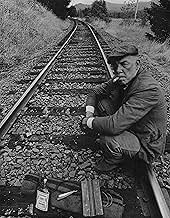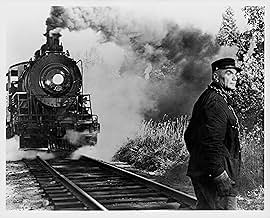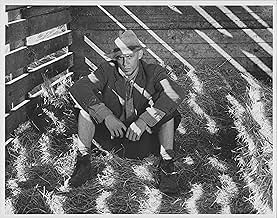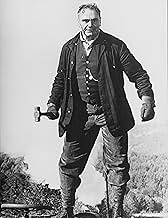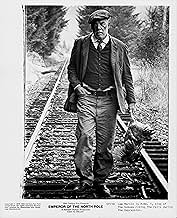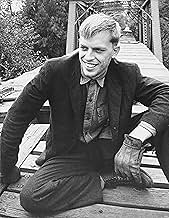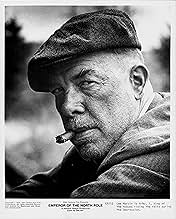In 1933, during the Depression, Shack the brutal conductor of the number 19 train has a personal vendetta against the best train hopping hobo tramp in the Northwest, A No. 1.In 1933, during the Depression, Shack the brutal conductor of the number 19 train has a personal vendetta against the best train hopping hobo tramp in the Northwest, A No. 1.In 1933, during the Depression, Shack the brutal conductor of the number 19 train has a personal vendetta against the best train hopping hobo tramp in the Northwest, A No. 1.
- Gray Cat
- (as Elisha Cook)
- Dinger
- (as Joe di Reda)
- Fakir
- (as James Goodwin)
- Preacher
- (as Ray Guth)
- Director
- Writers
- All cast & crew
- Production, box office & more at IMDbPro
Storyline
Did you know
- TriviaThe title refers to a joke among hobos during the Great Depression that the world's best hobo was Emperor of the North Pole, a way of poking fun at their own desperate situation since somebody ruling over the North Pole would be ruling over a wasteland.
- GoofsThe switch is not thrown for the mail express train to pass by Shack's train as it just enters the junction. In those days, not having the switch thrown would have derailed the mail train.
- Quotes
A no. 1: [At the end of the movie, A No. 1 throws Cigaret off of the train, into a pond, and shouts to him from the train] Hey kid you got no class. Hit the bums, kid. Run like the devil. Get a tin can and take up mooching. Knock on back doors for a nickel.
A no. 1: Tell them your story. Make 'em weep. You could have been a meat-eater, kid. But you didn't listen to me when I laid it down.
A no. 1: Stay off the tracks. Forget it. Its a bum's world for a bum. You'll never be Emperor of the North Pole, kid. You had the juice, kid, but not the heart and they go together. You're all gas and no feel, and nobody can teach you that, not even A-No.1. So stay off the train, she'll throw you under for sure. Remember me for that. So long, kid.
- Alternate versionsOriginally premiered as "Emperor of the North Pole": the film was pulled from release because people thought the film was about the Arctic. It was re-released as "Emperor of the North" and given two different advertising campaigns: one with a poster playing up the comedy, another with a poster playing up the violence (The poster said "If you can ride Shack's train and live, you're...Emperor of the North!"). Neither new campaign clicked with audiences. The song "A Man and a Train" is sung in "Emperor of the North" by Marty Robbins. The poster for the original release says it is sung by Bill Medley. It is unknown what other changes, if any, were made between the two releases.
I was just a teenager when this movie was released in theatres. (There were no DVD's or VHS home releases back then). I caught just a few brief commercial promos on TV advertising "Emperor of the North Pole" and from that moment, I was hooked and had to see it. Then, in the flash of a weekend passing it was gone, yanked from the schedule at the local theatre. Perhaps it was considered too brutish in its violence or perhaps the misleading title "Emperor of the North Pole" kept audiences out of the theatre. There was further confusion for years afterwards when the reissue title came out as "Emperor of the North".
I never did get to see it way back when, but it stayed in my memory and thankfully in the era of satellite dishes and 24 hour movie channels, it lives again for the world to see in all its glory.
For those who love steam engine trains, this movie, (along with "The Train" and "Danger Lights") is an absolute must see. Director Robert Aldrich having completed the acclaimed and commercially successful "The Dirty Dozen" just 6 years earlier had the resources, the artistic courage, and the benefit of working with two veteran Dirty Dozen actors (Lee Marvin & Ernest Borgnine)who just lock-on to their respective characters with perfection.
The casting of this movie, (especially the minor roles of all the bo's and the railroad men) is superb. The cinematography is also fantastic and not only captures the beauty of Oregon, but a sense of the time and place of a depression-era story. Even the changing Oregon weather (alternating rainy-foggy days, with bright sunshine, is depicted accurately). The viewer can actually feel the cold of the soaking rain as the two hobos ride the passenger car. The frequent violence is brutal but a necessary part of the tale.
As for the story itself, the hobo's speak their own language in a kind of closed-society lyrical tongue that seems to be partially inspired by the depression era paintings of Thomas Hart Benton. It's not Shakespeare, but half the fun is trying to figure out what they are saying.
The music track, although it mostly works for the movie, seems oddly out-of-place with the period depicted, as it has a definite 1960's elevator-beautiful music component, at times. Not that this takes away anything from the movie, however. Similar, out-of-the-era music exists in great movies like, The Sting, Butch Cassidy and the Sundance Kid, and Ryan's Daughter.
Even the effects soundtrack is a masterpiece of tight editing that greatly adds to the enjoyment of the movie. Listen to the whistle blowing of the opposing "mail train" slowly growing in intensity during the scene where the two trains are highballing it to a full head-on crash. Certainly one of the most frightening moments of any "train" picture. This is film-making at its best.
Also appreciated... a subtle moment when a passenger train is pulling into the station and the viewer hears (but does not see) what might be typical comments from the passengers from a 1930's-era train. "The train only stops for a few minutes"..."I think I'll buy a newspaper", etc.
Emperor of the North Pole is great movie and an absolute must see if you are a fan of vintage railroading, Lee Marvin, Ernest Borgnine, Robert Aldrich, or Keith Carradine. You won't be disappointed!
- How long is Emperor of the North?Powered by Alexa
Details
Box office
- Budget
- $3,705,000 (estimated)
- Runtime1 hour 58 minutes
- Color
- Aspect ratio
- 1.85 : 1
Contribute to this page



